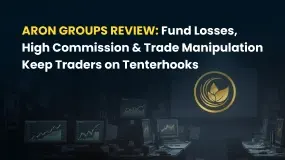简体中文
繁體中文
English
Pусский
日本語
ภาษาไทย
Tiếng Việt
Bahasa Indonesia
Español
हिन्दी
Filippiiniläinen
Français
Deutsch
Português
Türkçe
한국어
العربية
What Makes Cross-Border Payments Easier Than Ever?
Abstract:Cross-border payments are now faster, cheaper, and simpler! Explore fintech, blockchain, and smart solutions to overcome costs, delays, and global payment hurdles.

The world is more connected than ever before, with firms daily transacting across geographical, cultural, and financial boundaries. Cross-border payments have become an important aspect of the global economy for everyone from multinational enterprises to small firms expanding into new markets. However, as recently as a decade ago, moving money across borders was sometimes slow, costly, and inefficient.
Today's narrative is different. Technology advancements, combined with purposeful policy adjustments, have made cross-border payments more seamless and accessible than ever before. Businesses can now make payments to partners, suppliers, and employees all across the world in a fraction of the time and expense it used to take. But what's propelling this transformation? Are there still obstacles to overcome? This essay investigates how cross-border payments have evolved, the problems that firms face, and the technologies that make worldwide transactions easier.
What Barriers Do Businesses Face When Making Cross-Border Payments?
Despite advancements, cross-border payments are not without challenges. Businesses, particularly small and medium-sized enterprises (SMEs), frequently find the process overwhelming due to a number of chronic challenges. Understanding these issues is the first step toward effective problem-solving.
· High Transaction Costs
The high cost of international payments is one of the most important impediments for firms that deal with them. Traditional financial organizations, such as banks, frequently charge high costs for set transaction fees, percentage-based service fees, and unfavorable currency conversion rates. These charges can dramatically reduce profit margins for small firms and startups on a tight budget.
Furthermore, hidden costs from intermediate banks, which facilitate transactions between the sender's and receiver's banks, exacerbate the financial hardship. The cumulative expense for organizations that make regular foreign payments can be prohibitively expensive.
· Slow Processing Times
Speed is sometimes essential in today's fast-paced global economy, but typical cross-border transfers are anything but. Legacy systems can process payments in three to five business days, with delays caused by time zone differences, varied bank operation hours, and the requirement for various intermediaries. This slow pace can disrupt supply chains, cause payroll delays, and damage relationships with multinational partners.
· Regulatory Complexity
Cross-border payments are governed by a complex set of regulations that vary per country. Anti-money laundering (AML) and counter-terrorism financing (CTF) regulations are just the beginning. Businesses must also handle tax restrictions, foreign exchange reporting, and data privacy laws. Compliance can be expensive and time-consuming for organizations that are new to these frameworks, with the added danger of penalties for noncompliance.
· Currency Fluctuations
Managing different currencies presents unique issues. Exchange rates can move fast, often within hours, making the amount of money received or paid by firms unpredictable. For example, a corporation may commit to a €10,000 payment only to realize that a little change in exchange rates affects the value received in their own currency. Hedging tactics can help to reduce risk, but they frequently necessitate complex tools and expertise that not all firms have.
· Lack of Transparency
Traditional payment systems frequently fail to provide real-time tracking or detailed information about transaction status. Businesses are left in the dark about when their cash will arrive, who handled it along the route, and how fees are allocated. The absence of openness affects confidence and hampers financial planning.

The Technologies Revolutionizing Cross-Border Payments
The challenges of the past have encouraged creativity in the area of cross-border payments. From blockchain technology to AI-powered platforms, new solutions are solving inefficiencies and enabling organizations to prosper on a global scale.
· Blockchain and Cryptocurrency
Blockchain technology is revolutionizing the way international payments are processed. Blockchain cuts transaction prices and processing times by removing intermediaries while boosting transparency. Cryptocurrencies such as Bitcoin and Ethereum, as well as stablecoins such as USDC, enable quick cross-border money transfers. Blockchain-based smart contracts increase trust and security by guaranteeing payments are only executed when certain criteria are met.
· Digital Payment Platforms
PayPal, Wise (previously TransferWise), and Stripe have transformed cross-border payments by providing user-friendly platforms that dramatically cut prices and processing times. These platforms employ novel methods to circumvent established banking networks, resulting in more competitive exchange rates and speedier transactions.
· API Integration
Businesses can integrate payment processing into their platforms for a more seamless customer experience. E-commerce businesses, for example, can allow customers to pay in their native currency, with automatic conversions and clear fees.
· AI and Machine Learning
AI systems improve cross-border payment security and compliance. Machine learning algorithms can detect fraudulent activities in real-time, assess risk, and assure compliance with international rules. Furthermore, AI assists firms in predicting currency swings, allowing for more accurate financial planning.
· Central Bank Digital Currencies (CBDCs)
To modernize financial institutions, central banks throughout the world are testing digital versions of their currencies. CBDCs aim to simplify cross-border payments by introducing a government-backed digital currency that eliminates many of the inefficiencies associated with traditional payment methods.
The Benefits of Modern Cross-Border Payments
Innovations in cross-border payment technologies provide previously inconceivable advantages. Businesses that use these advancements can benefit from:
· What's Next for Cross-Border Payments?
The future of cross-border payments is really promising. Blockchain scalability, CBDC acceptance, and AI advancements are all projected to lead to even greater gains. Businesses must be watchful, responding to legal changes and technology improvements on a regular basis.
Collaboration among fintech firms, regulators, and traditional financial institutions will be critical to overcoming lingering problems. As this ecosystem develops, businesses of all sizes will gain access to cross-border payment options that are efficient, secure, and cost-effective.
Final Thoughts
Cross-border payments are no longer limited to huge enterprises with significant resources. Because of significant technological improvements, businesses of all sizes may now conduct international transactions with confidence. While challenges like as regulatory complexity and currency fluctuations exist, today's solutions are changing the way money travels across borders.
For companies looking to extend their global footprint, the tools and technology that are altering cross-border payments provide an unparalleled opportunity. Companies that embrace these advances can enter new markets, strengthen international alliances, and lay a solid platform for future success. The path to seamless global business is well on, and the opportunities are infinite.

Disclaimer:
The views in this article only represent the author's personal views, and do not constitute investment advice on this platform. This platform does not guarantee the accuracy, completeness and timeliness of the information in the article, and will not be liable for any loss caused by the use of or reliance on the information in the article.
Read more

tastyfx Exposed: Fund Losses, Trade Manipulation & Account Related Hassles Hurt Traders
Are fund losses normal for you at tastyfx? Does the US-based forex broker constantly manipulate prices to hit your trading experience? Do you fail to receive a reply from the broker on your fund withdrawal requests? Do you constantly face trading account issues with tastyfx? It’s time to read the tastyfx review shared by traders online.

Aron Groups Review: Fund Losses, High Commission & Trade Manipulation Keep Traders on Tenterhooks
Have you lost your hard-earned capital while trading via Aron Groups Broker? Has the high commission charged by the broker substantially reduced your trading profits? Does the Marshall Islands-based forex broker constantly manipulate spreads to widen your capital losses? Have you been lured into trading courtesy of Aron Groups No Deposit Bonus, only to find that you had to deposit capital to get a bonus? All these and many more trading issues have become synonymous with the experience of Aron Groups’ traders. Consequently, many traders have shared negative Aron Groups reviews online. In this article, we have shared some of their reviews.

Uniglobe Markets Bonus Review: Understanding the Offers and Uncovering the Risks
Many traders start looking for a new broker by searching for special deals and bonuses. The phrase "Uniglobe Markets no deposit bonus" is something people often search for. Let's address this question clearly and directly. Based on all the information we have, Uniglobe Markets does not currently offer a no-deposit bonus. Instead, this broker focuses on bonuses that require you to deposit your own money first. To get any bonus credits, traders must put in their own capital. Read on to learn how this entire bonus works out for traders.

PINAKINE Broker India Review 2025: A Complete Guide to Safety and Services
As online trading grows in popularity, Indian traders are always looking for brokers that offer good deals and fair conditions. PINAKINE has become one of these companies, getting attention by promising high leverage and many different account options. This broker, officially called Pinakine Liquidity Limited, has been operating for about one to two years and has made many people curious. Traders want to know the answer to the most important question: Is PINAKINE a real and safe place to invest money, or are there hidden dangers behind its attractive offers? Read on to know the answer.
WikiFX Broker
Latest News
Is Nash Markets Regulated or Risk? Truth About Nash Markets’ License & Withdrawal Issues
Webull Widens Crypto Futures with Coinbase Derivatives
Latest FCA Daily Alerts and Consumer Warnings for 2025
CySEC Blocks Certification Access to Combat Advisor Impersonation
Angel one 2025 Review & Complaints
Exclusive Markets Under the Scanner: Traders Report High Swap Charges, Deposit Discrepancies & More
Voices of the Golden Insight Award Jury - Simon So, Chief Experience Officer of Hantec Financial
PINAKINE Broker Review: A Complete Look at Its Services and Risks
Pinched By Penny Shortage, US Retailers Beg Congress To Step In
PINAKINE Broker India Review 2025: A Complete Guide to Safety and Services
Currency Calculator




